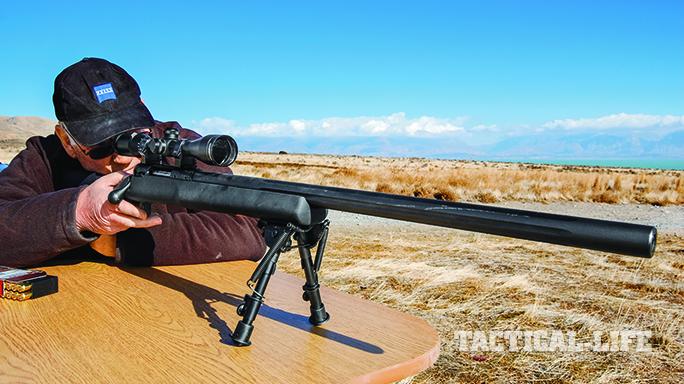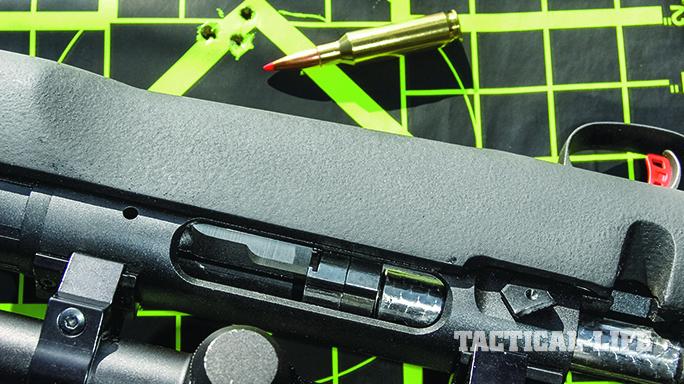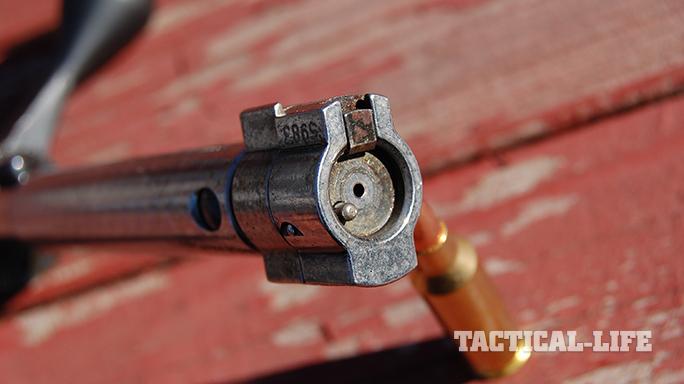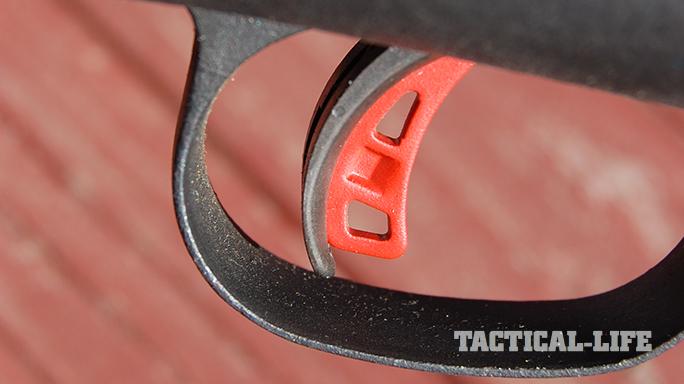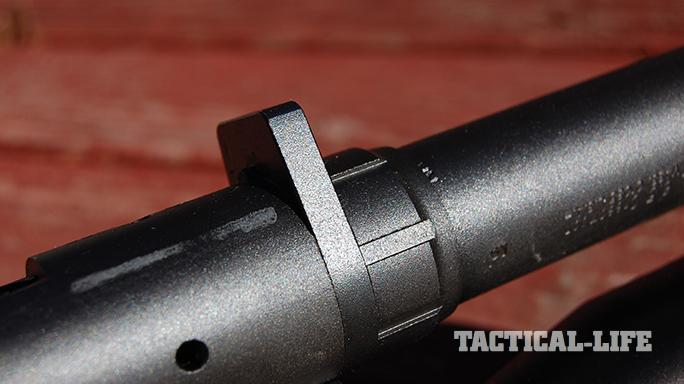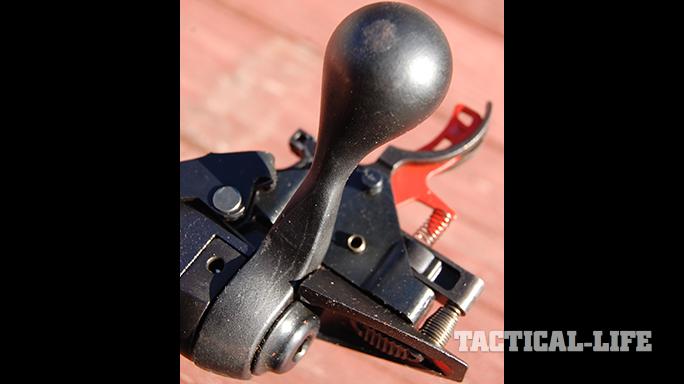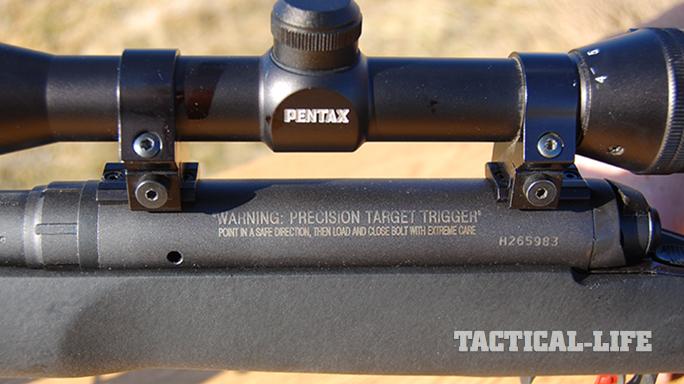Savage Arms now offers a stupefying variety of hunting and target rifles based on the venerable Model 10/12 action. The first store-bought factory rifle I ever purchased was an economy-priced Model 10 chambered in .308 Winchester. I bought it in 1960, soon after the short-action version was introduced.
That no-frills rifle accounted for a number of mule deer and pronghorn in the several years I owned it. I developed a fine appreciation of its accuracy and dependability, and have owned and used several variations since.
The latest variation I’ve been testing is the Savage Model 12 LRP (Long Range Precision) rifle chambered for the relatively new 6.5 Creedmoor cartridge. As the “LRP” designation implies, this is a specialized rifle intended for extreme-distance marksmanship.
Advertisement — Continue Reading Below
LRP Details
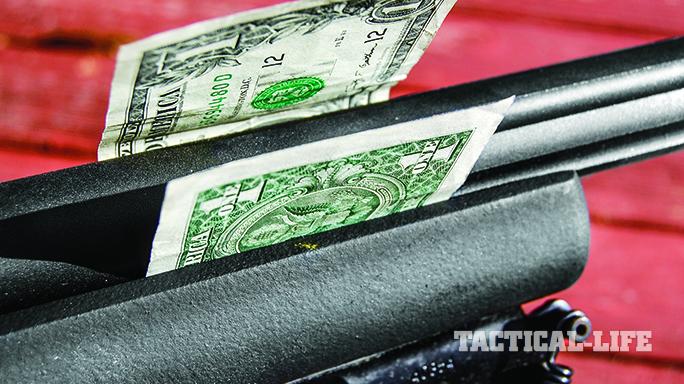
The Savage Model 12 LRP is a high-precision instrument designed to compete in the rarified world of long-range target competition. It wears a 26-inch, heavy, fluted, carbon-steel barrel measuring a full inch in diameter at the recessed muzzle. The barreled action is mated to a special H-S Precision fiberglass stock with an aluminum bedding block. The barrel floats freely within the stock.
This is a very substantial rifle that tips the scales at an impressive 11 pounds before a scope is mounted. Adding a scope, a bipod and four rounds of ammunition nudges the total heft to a ponderous 14 pounds. The rifle is decidedly muzzle heavy—not something you’d want to tote very far from your truck. However, muzzle heaviness is a distinct advantage when you’re shooting from a stationary bench.
Advertisement — Continue Reading Below
- RELATED STORY: 12 Next-Gen Precision Rifles For Long-Range Shooting
In addition to the 6.5 Creedmoor cartridge, Savage Arms offers Model 12 LRPs chambered in .260 Remington and .243 Winchester. The action is the same length used for .308 Winchester loads, so it should be able to handle most short-action cartridges by simply changing barrels—something that’s easy to do with this ingenious design.
The bolt face is fully recessed, protecting the shooter from possible case failures or gases leaking from punctured primers. Twin front lugs provide a solid lockup, while a plunger ejector and a spring-loaded extractor make for positive ejection. The oversized bolt handle is easy to grasp. The bolt body is machine-jeweled—an attractive touch.
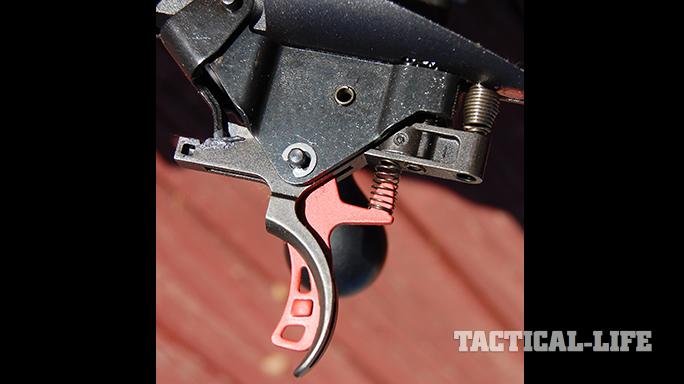
One superlative feature is the patented AccuTrigger that Savage Arms has long been famous for. The red Target AccuTrigger provided on LRP rifles differs from AccuTriggers on other Savage bolt rifles primarily because it permits a much lighter let-off. Savage’s standard AccuTrigger can be safely adjusted from 1.5 to 6 pounds. The Target AccuTrigger can be adjusted as low as a mere 6 ounces. Acknowledging the danger of accidentally jarring a trigger set this light and causing an unwanted discharge, Savage emblazons a stern warning on the left side of the LPS receiver: “Warning: Precision target trigger. Point in a safe direction, then load and close the bolt with extreme care.”
Advertisement — Continue Reading Below
When I checked the trigger on my test rifle, it broke crisply at a bare 1.2 pounds of pressure. That was light enough for me, so I attempted no further adjustments. If I’d been preparing to shoot competitively at 1,000 yards or more, I’d have gone with the lightest setting the trigger allowed. At extreme distances, an ultra-light trigger could make a real difference in the scores you post.
The AccuTrigger features an integral AccuRelease. This “trigger within a trigger” must be depressed with your trigger finger, which unblocks the sear. This drives the firing pin forward, causing the rifle to fire. The lighter the trigger, the better the accuracy. However, extra care must be taken to keep the rifle pointed safely downrange.
Going The Distance
Advertisement — Continue Reading Below
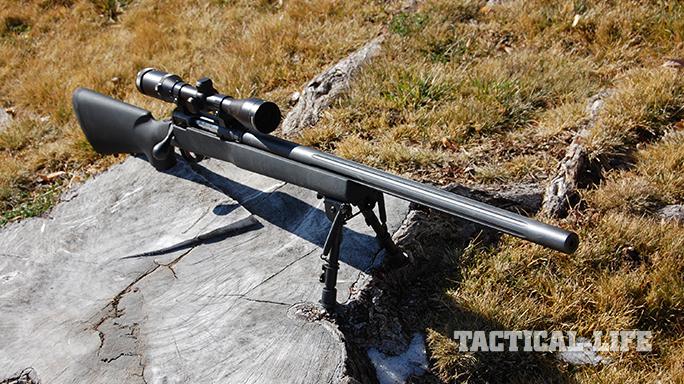
After mounting a 4-12x40mm Pentax Gamekeeper scope, I placed the rifle, ammo and a portable shooting bench into the trunk of my car and headed to the desert. There’s a formal shooting range located on a mountainside not far from my home, but when I’m wringing out a firearm I’m testing, waiting while other shooters complete their rounds of firing, then retrieve their targets before firing again burns up a lot of time. I’m impatient by nature, so I prefer to drive 40 miles into the empty desert and shoot at my leisure. I consider it my private range. As a bonus, there are usually plenty of jackrabbits in the neighborhood, which is why I always have a good .22 LR rifle along with me.
- RELATED STORY: Ready, Aim, Rifle – 5 Top-Tier Rifles For 2016
When I tested the Savage Model 12 LRP, the only load available from my usual supplier was Hornady’s 129-grain SST Superformance ammo. The store had no other 6.5 Creedmoor ammo on hand, so I had to make do with what I could buy there. Thankfully, the cartridge’s popularity has increased significantly, and several companies are now producing 6.5 Creedmoor loads for a variety of tasks, including competition and hunting. In fact, in addition to punching tiny groups in paper, the 6.5 Creedmoor is highly capable for game up to and including elk. This chambering’s delightfully low recoil is an added bonus for shooters.
Before I began shooting the Savage Model 12 LRP at targets, I chronographed the Hornady load. It yielded 2,942 fps and produced no discernable recoil. Some recoil forces are inevitably produced, but the heft of this specialized rifle generates kick I simply couldn’t feel. That’s one big advantage of the 6.5 Creedmoor—it’s a real pussycat to shoot. This should make it extremely popular in the lightweight hunting rifles chambering the load that are now available.
Advertisement — Continue Reading Below
The trigger was a real delight. The 1.2-pound let-off was icicle-breaking crisp with no take-up or overtravel. It was much better than most set triggers I’ve used. I wasn’t tempted to test the trigger at its lowest 6-ounce setting—I was afraid a strong breeze might trip it!
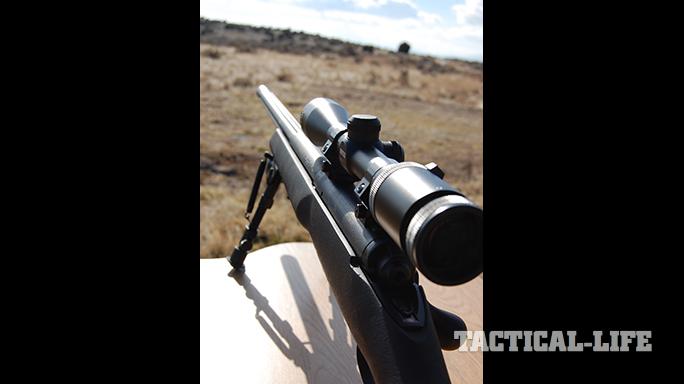
I fed the rifle from the removable magazine rather than loading each round into the chamber by hand. The magazine holds four rounds, but the last round is a really tight fit. Rather than struggle to reach maximum capacity, I loaded only three rounds at a time. While the rounds are staggered in the magazine, the magazine lips narrow into a single column, presenting only one cartridge at a time to the bolt face. This provides a great combination of staggered-load capacity with reliable in-line feeding.
To measure the rifle’s inherent accuracy, I attached a Harris bipod to the forend, then positioned the rifle on my portable bench. I fired a couple of rounds from 25 yards to get the bullets printing on paper, then adjusted the scope until the point of impact was just 1 inch above the bullseye. Then I moved the target until it was 100 yards away and fired a three-shot group.
Advertisement — Continue Reading Below
That group made a tight 0.65-inch cluster on the target. I fired three more groups that delivered almost identical accuracy—the tightest measured just 0.6 inches between centers.
This rifle is specifically designed for long-distance shooting, so I moved the target 200 yards away. The contour of the terrain prevented me from moving it much farther. At 200 yards, the rifle produced three-shot groups averaging 1.2 inches, center-to-center. A slight breeze was blowing, and my portable shooting bench and fold-down bipod didn’t provide the rock-solid stability a permanent concrete or wood-beam bench would allow. However, I was perfectly happy with the rifle’s 0.6-MOA performance.
For more information, visit http://www.savagearms.com or call 413-568-7001.
Advertisement — Continue Reading Below
This article was originally published in ‘Gun Annual’ #191. For information on how to subscribe, please email subscriptions@
